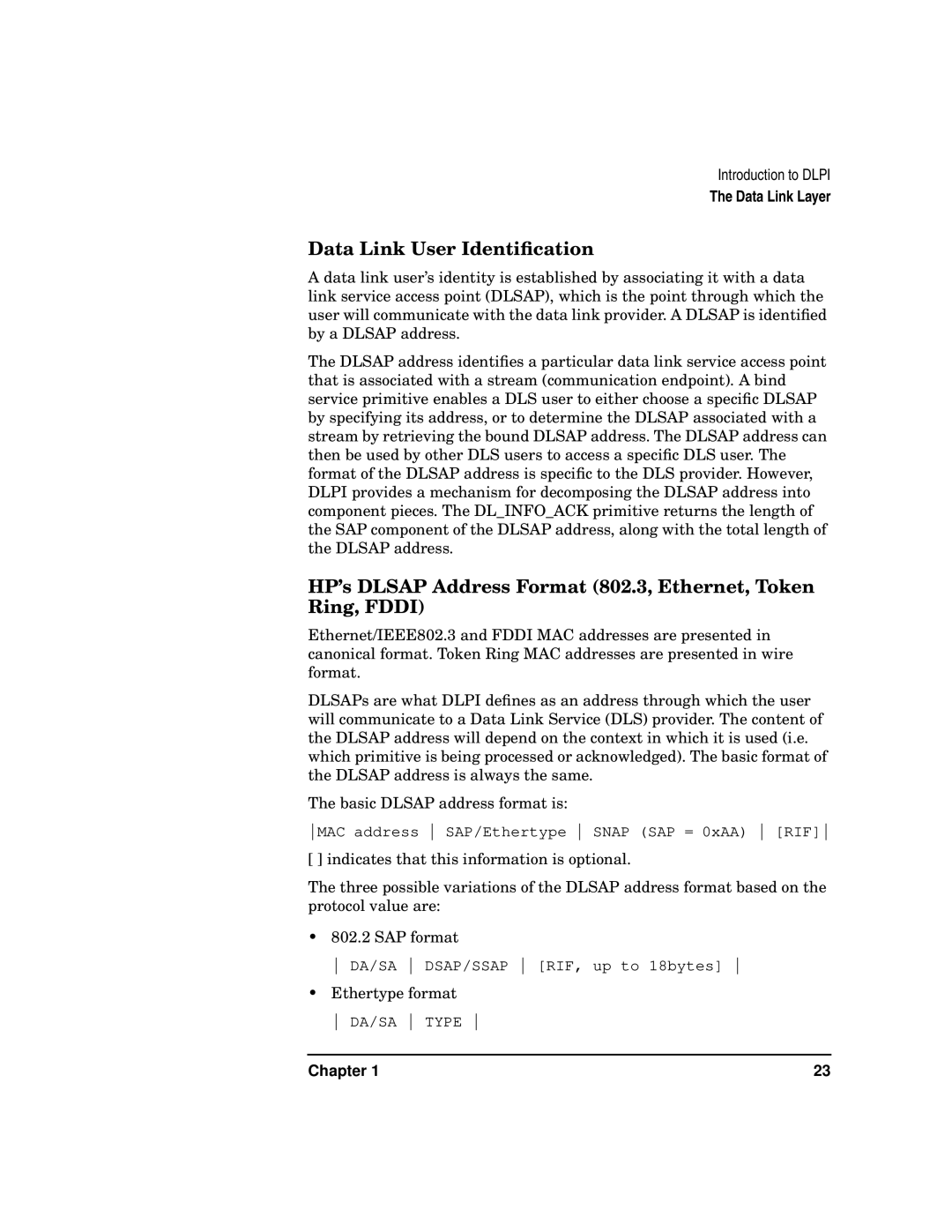Introduction to DLPI
The Data Link Layer
Data Link User Identification
A data link user’s identity is established by associating it with a data link service access point (DLSAP), which is the point through which the user will communicate with the data link provider. A DLSAP is identified by a DLSAP address.
The DLSAP address identifies a particular data link service access point that is associated with a stream (communication endpoint). A bind service primitive enables a DLS user to either choose a specific DLSAP by specifying its address, or to determine the DLSAP associated with a stream by retrieving the bound DLSAP address. The DLSAP address can then be used by other DLS users to access a specific DLS user. The format of the DLSAP address is specific to the DLS provider. However, DLPI provides a mechanism for decomposing the DLSAP address into component pieces. The DL_INFO_ACK primitive returns the length of the SAP component of the DLSAP address, along with the total length of the DLSAP address.
HP’s DLSAP Address Format (802.3, Ethernet, Token Ring, FDDI)
Ethernet/IEEE802.3 and FDDI MAC addresses are presented in canonical format. Token Ring MAC addresses are presented in wire format.
DLSAPs are what DLPI defines as an address through which the user will communicate to a Data Link Service (DLS) provider. The content of the DLSAP address will depend on the context in which it is used (i.e. which primitive is being processed or acknowledged). The basic format of the DLSAP address is always the same.
The basic DLSAP address format is:
MAC address SAP/Ethertype SNAP (SAP = 0xAA) [RIF]
[ ] indicates that this information is optional.
The three possible variations of the DLSAP address format based on the protocol value are:
•802.2 SAP format
DA/SA DSAP/SSAP [RIF, up to 18bytes]
•Ethertype format
DA/SA TYPE
Chapter 1 | 23 |
